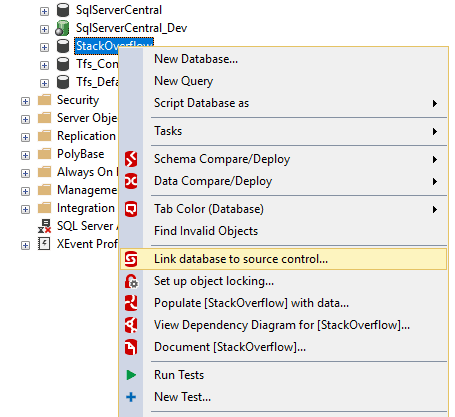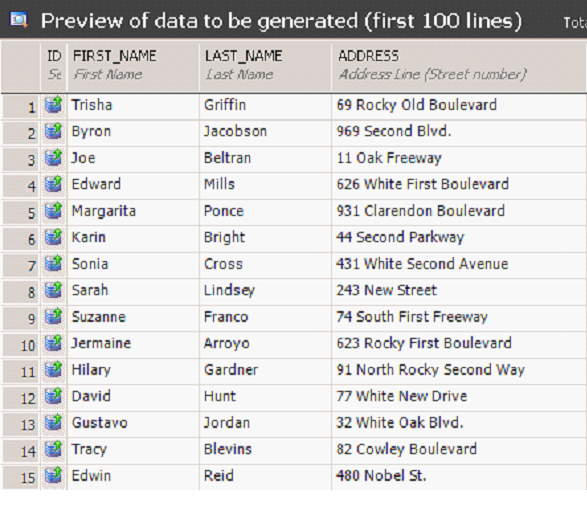

- RED GATE SQL DATA GENERATOR OTHER TABLE COLUMN MANUAL
- RED GATE SQL DATA GENERATOR OTHER TABLE COLUMN UPGRADE
When you create a Flyway Desktop project usually you create a Baseline script. With Redgate Deploy though, we’re fundamentally leveraging the Flyway command line capability for smooth, incremental deployments, and this is always a migrations only deployment – to move across to using Flyway then we’re going to need to make a few alterations to how the pipeline works.įirst-things-first: We need some migrations, more specifically: THE migration. It’s easy to switch across from a SQL Source Control to Flyway Desktop, which means we get immediate upgrades in speed, reliability and stability in our development process, especially where we’re working with Cloud-hosted databases. This is the step where we have to fundamentally change the way the pipeline works.
RED GATE SQL DATA GENERATOR OTHER TABLE COLUMN MANUAL
If you are only using SQL Source Control or you’re using SQL Source Control with the SQL Compare GUI for more manual deployments currently then you’re done! When you want to extend your pipeline, you can read below. All they will need to do is re-specify their Dev Database Connection. I set up a copy of the DMDatabase on my local SQL Developer Instance, and then created an Azure DevOps repo and cloned it down to my machine:Īnd just like that! SQL Source Control is replaced – our teams can now pull down the latest copy of the Repo with the Flyway Desktop project in and open it. Note: This post is for people who want to or are interested in moving to a newer solution (and to give them an idea of what to expect) and in no way reflects any level of urgency you should be feeling – I’m certainly not pushing you to move any of your pipelines now, especially if you’re happy with what you have! Setupįor starters I set up an end to end SQL Source Control and SQL Change Automation pipeline in Azure DevOps – my understanding of the approach I’m going to take is that this should work wherever your pipeline is (TeamCity & Octopus Deploy, Bamboo, whatever) so don’t feel that this post is not for you just because I used Azure DevOps.


RED GATE SQL DATA GENERATOR OTHER TABLE COLUMN UPGRADE
So the big question is how do we upgrade our state-based pipeline? Let’s find out together! We want to maintain the history of our changes for reference, and we don’t want to simply disregard the whole pipeline. Yes Flyway Desktop and Redgate Deploy in general are super easy to get up and running with for new databases, even difficult, monolithic databases (thank you Clone as shadow!), but what about projects you already have under source control? Like I mentioned, SQL Source Control has been around for years and is beloved by many, and SQL Change Automation is still in use by thousands too. but what if you’re already using Redgate? A combination of the best of the best: all of the benefits of previous Redgate solutions, few to none of the drawbacks.Cloud ready: designed for use with IaaS and PaaS database options.Ingeniously simple: to set up, to use, to everything.It was architected from the ground up to be 3 things: These technologies are still a great option and are still present in Redgate Deploy for those whom they work for, however with the rise of still further distributed computing topologies, and the dominance of cloud-hosted architecture and PaaS databases in todays world – something new is needed.Īs you’ve seen in some of my previous posts, Flyway Desktop is really really easy to get up and running with, not only that but it combines the State and Migrations models together creating one repo with ALL the benefits, and none of the deciding which model is best for you. SQL Source Control and DLM Automation (later SQL Change Automation) have formed the basis for many a pipeline for many many years, and they have been reliable, in some cases life changing for those who have used them… but the times, they are-a changing! and you could then use DLM Automation to build and deploy this state-based database project to Test, Prod and so on. Back in my day it was SQL Source Control to store your database in Version Control at the time it was probably a 50/50 split between people who used Git and people who used other systems like SVN, TFVC (TFS/VSTS) and Vault or Mercurial etc. There has been a lot of change over the years in the Redgate solutions – I hasten to add this is a good thing. “Like all magnificent things, it’s very simple.”


 0 kommentar(er)
0 kommentar(er)
